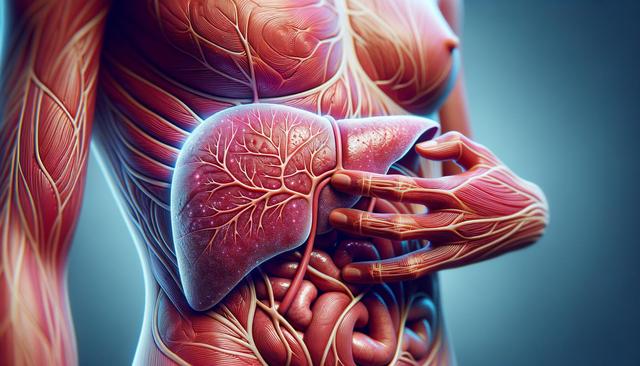What Is Fatty Liver Disease?
Fatty liver disease occurs when excess fat builds up in the liver cells, impairing the liver’s ability to function properly. There are two primary types: non-alcoholic fatty liver disease (NAFLD) and alcoholic fatty liver disease (AFLD). NAFLD is more common and is often linked to obesity, insulin resistance, and metabolic syndrome, while AFLD is directly related to excessive alcohol consumption. Over time, fatty liver can progress to more serious conditions such as non-alcoholic steatohepatitis (NASH), fibrosis, cirrhosis, or even liver failure.
While many individuals with fatty liver disease do not exhibit symptoms in the early stages, some may experience nonspecific symptoms like fatigue, abdominal discomfort, and in some cases, itching. The connection between fatty liver and itching isn’t always straightforward, but it can be linked to liver inflammation and impaired bile flow.
Why Does Fatty Liver Cause Itching?
Itching, also known as pruritus, can be a symptom of liver dysfunction, especially when bile production and flow are affected. In advanced cases of fatty liver disease, particularly when it progresses to fibrosis or cirrhosis, the bile ducts may become damaged. This can lead to a buildup of bile salts in the bloodstream, which then deposit in the skin and trigger itching sensations.
The itching associated with liver issues is often more intense at night and may not be limited to one area. Commonly affected areas include:
- Arms
- Legs
- Back
- Palms and soles
Unlike allergic reactions, liver-related itching is not typically associated with a visible rash, although constant scratching can lead to skin irritation or secondary infections. It’s important to note that not every person with fatty liver will experience itching, and the severity can vary greatly among individuals.
Other Possible Causes of Itching in Liver Conditions
Itching in the context of liver disease can also be influenced by other factors beyond bile salt accumulation. Inflammatory responses and changes in hormone levels may play a role. Some researchers suggest that substances like histamine, serotonin, and endogenous opioids may contribute to pruritus in liver disease.
In some cases, medications used to manage fatty liver or related health conditions like high cholesterol and type 2 diabetes might also cause skin reactions or itching as side effects. If you suspect a medication is contributing to your symptoms, it’s important to consult your healthcare provider before making any changes to your treatment plan.
Other liver-related conditions that could cause itching include:
- Primary biliary cholangitis (PBC)
- Primary sclerosing cholangitis (PSC)
- Cholestasis, particularly during pregnancy
Diagnosing the exact cause of itching requires a thorough medical evaluation, including liver function tests, imaging, and sometimes liver biopsies.
Managing Itching Related to Fatty Liver
Addressing itching caused by fatty liver involves treating both the symptom and the underlying liver condition. Lifestyle modifications are often the first line of defense for those with NAFLD. These may include:
- Adopting a balanced diet low in saturated fats and high in fiber
- Engaging in regular physical activity
- Achieving and maintaining a healthy weight
- Managing blood sugar and cholesterol levels
For itching specifically, treatments might include:
- Topical anti-itch creams containing menthol or calamine
- Antihistamines to reduce itching, especially at night
- Bile acid binders like cholestyramine (used under medical supervision)
- Phototherapy in severe cases
Moisturizing the skin regularly and avoiding hot showers can also help alleviate discomfort. It’s essential to avoid scratching, as this can worsen the skin condition and potentially lead to infections.
When to Seek Medical Attention
Itching alone may not always indicate a serious problem, but when combined with other symptoms such as jaundice (yellowing of the skin and eyes), dark urine, pale stools, or abdominal swelling, it could be a sign of liver damage requiring immediate attention. If you have been diagnosed with fatty liver and begin experiencing persistent itching, it’s important to bring this up with your healthcare provider.
Doctors may order a range of tests to evaluate liver function, including:
- Blood tests (liver enzymes, bilirubin levels)
- Ultrasound or MRI scans
- FibroScan to assess liver stiffness
- Liver biopsy in selected cases
Understanding the full context of your symptoms helps guide appropriate treatment and monitoring. Early intervention can prevent the progression of fatty liver disease and reduce complications like chronic pruritus.




Leave a Reply